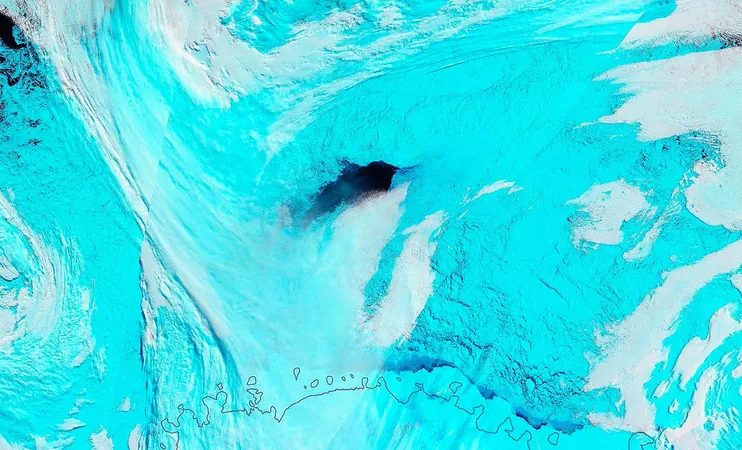
A Switzerland-Sized Gap Opens in Antarctica: What It Means for Our Planet
2025-04-24
Author: Emma
A Stunning Discovery in Antarctica
Scientists are buzzing about a monumental discovery: an enormous hole, stretching over an area comparable to Switzerland, has opened up in Antarctica. This unexpected phenomenon, called a polynya, has remained open for several weeks, sparking intrigue and concern about what’s fueling this unusual event.
What Exactly Is a Polynya?
Polynyas are openings in sea ice where ice has melted or broken away, revealing the ocean beneath. While these formations are not unheard of in polar regions, the sheer size and duration of the Maud Rise polynya make it a significant event that demands our attention.
The Science Behind the Polynya Formation
So why this massive hole now? The culprit lies in a combination of natural processes, particularly Ekman transport—when wind-driven ocean currents push warm, salty water into the region, intensifying the melting of the ice from below. This dynamic kept the hole alive for an impressively long time.
Historical Context: Maud Rise's Role
The underwater mountain known as Maud Rise, nestled beneath the Weddell Sea, has a storied history with polynya formations. Discovered as a polynya hotspot during the mid-1970s, the region has seen varied occurrences since. Scientists believe that the underwater geography contributes to a swirling effect that traps warmer water, which then erodes the ice.
The Curious Case of 2017
In 2017, another significant polynya event reignited interest among researchers. As currents like the Weddell Gyre intensified, they brought warmer water to the surface, softening the ice and creating a large opening. Yet, what puzzled scientists was why this hole persisted through the winter months.
Storms and Climate Change: A Dangerous Duo
One key player in this saga is the climate. Recent research suggests that extratropical storms, which are on the rise due to global warming, significantly contributed to the longevity of the Maud Rise polynya. These storms not only moved ice away but also infused the area with heat via atmospheric rivers—massive streams of moisture—further weakening the ice.
The Global Implications of Local Melting
While a polynya may seem like a local anomaly, its repercussions extend far beyond Antarctica. These ice openings can influence global ocean circulation patterns, including the vital global conveyor belt that regulates heat and carbon distribution worldwide. The intense convection linked to polynyas can release significant amounts of carbon dioxide into the atmosphere, potentially accelerating global climate change.
A Call to Action
As the effects of climate change become ever more apparent, scientists are urging us to pay attention. The interactions between local ice dynamics and broader climate patterns could reshape our planet. What happens in Antarctica isn't just about ice; it’s a critical part of our Earth's increasingly fragile system.









 Brasil (PT)
Brasil (PT)
 Canada (EN)
Canada (EN)
 Chile (ES)
Chile (ES)
 Česko (CS)
Česko (CS)
 대한민국 (KO)
대한민국 (KO)
 España (ES)
España (ES)
 France (FR)
France (FR)
 Hong Kong (EN)
Hong Kong (EN)
 Italia (IT)
Italia (IT)
 日本 (JA)
日本 (JA)
 Magyarország (HU)
Magyarország (HU)
 Norge (NO)
Norge (NO)
 Polska (PL)
Polska (PL)
 Schweiz (DE)
Schweiz (DE)
 Singapore (EN)
Singapore (EN)
 Sverige (SV)
Sverige (SV)
 Suomi (FI)
Suomi (FI)
 Türkiye (TR)
Türkiye (TR)
 الإمارات العربية المتحدة (AR)
الإمارات العربية المتحدة (AR)